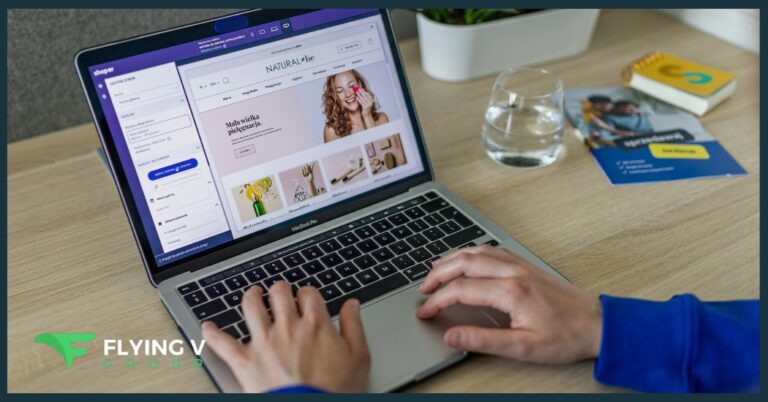Digitization has proliferated into every aspect of daily life, with the business landscape being one of its success stories. As such, it has become crucial for enterprises like yours to establish a successful online presence on platforms like Amazon, the world’s largest online marketplace.
However, standing out on Amazon can be daunting since it currently accommodates over 9.7 million sellers. As such, you must know how to use its tools to maximize visibility, drive sales, and improve competitiveness.
Among these tools, Sponsored Products and Sponsored brands offer the most benefits. They can help you increase your visibility and attract customers, but each has pros, cons, and use cases. So, read this article to understand their differences and select the most suitable approach to pursue your advertising goals.
What are Sponsored Products?
Sponsored Products is a pay-per-click (PPC) program that lets you select items from your inventory and make them visible on relevant search results. Amazon also tags them as “Sponsored” to differentiate them from organic search results.
Purpose
Leverage Sponsored Products to increase a specific product’s visibility. It is a powerful tool to capture the attention of potential customers actively seeking related items. It also lets you compete for positions in search results, even against more prominent and established competitors.
Moreover, this tool offers valuable insights into customer behavior and your ad’s performance. It lets you access data on impressions, clicks, conversions, and advertising costs to optimize campaigns, refine marketing strategies, and achieve maximum return on investment (ROI).
Example
How does this strategy look in practice? We used the search term “headphones” to try it out. The second top result has a “Sponsored” label, indicating a Sponsored Products listing. It even lists higher than well-established brands like Apple, Sony, and JBL, demonstrating its ability to help you become visible and competitive.

What are Sponsored Brands?
Like Sponsored Products, Sponsored Brands lets you promote items on Amazon. The difference is that you do not only promote individual products but your entire brand, as the name suggests.
Sponsored Brands ads consist of three components: your headline, logo, and a selection of your products. These components showcase your brand identity and offerings, enabling customers to explore and engage with different listings within a single ad. Ultimately, Sponsored Brands offer an opportunity to establish a strong brand presence on Amazon.
Purpose
Sponsored Brands lets you target keywords and product categories relevant to your offerings. This feature ensures that your ads are visible to users searching for related products, increasing their likelihood of visiting your store and converting. Sponsored Brands also appear near the top of search results, giving them higher visibility than organic listings.
Additionally, Sponsored Brands drive traffic and sales to your product listings. Your banner directs anyone who clicks on it to a customized landing page, allowing you to showcase your entire product range. It facilitates a smooth shopping experience for your prospects, making them more likely to convert and become loyal to your brand.
Example
Let us check out Sponsored Brands in action. Like the previous advertising strategy, we searched “headphones” on Amazon to find numerous product listings. Scrolling down a bit shows a banner for headphones. Clicking on it takes us to the merchant’s Amazon shop, where we can check out the product or explore other listings.

Sponsored Products vs. Sponsored Brands: 5 Factors to Consider
Trouble deciding on whether to leverage Sponsored Products or Sponsored Brands for your Amazon store? Consider the factors below to make a more informed decision that aligns with your advertising goals.
-
Brand Awareness vs. Product Visibility
What do you want your advertising campaign to achieve? This consideration determines which strategy takes you closer to your objectives.
Sponsored Brands showcases your entire brand, so it is particularly beneficial if you are looking to establish an identity, create recognition among prospects, and differentiate yourself in a crowded marketplace. On the other hand, Sponsored Products focuses on individual product visibility. It is an ideal choice when you want to target specific listings and drive traffic directly to them.
-
Ad Placement and Visibility
While both options appear on search results, their placement and visibility significantly impact their effectiveness in helping you generate leads and conversions.
Sponsored Products typically appear on top of search results. As such, it provides prominent visibility to shoppers looking for relevant products. Meanwhile, Sponsored Brands do not necessarily appear on top but occupy a significant portion of the screen. There is a higher chance of prospects noticing the banner, increasing your likelihood of attracting engagement and conversions.
-
Campaign Control
What is your desired level of control over the campaign? This decision will help you determine whether a brand-focused or product-specific strategy suits your advertising goals.
Sponsored Products offers more precise control over the listing. You will have the flexibility to set ad bids per product, enabling you to optimize your advertising spending depending on each listing’s performance. Conversely, Sponsored Brands offers a more holistic approach to advertising but minimal control over individual product bids and targeting.
-
Budget and Cost
Money plays a crucial role in your decision between the two ad strategies. After all, your target is to secure as much return on ad spend (ROAS) as possible to ensure your campaign’s success.
Sponsored brands generally require a higher budget as they focus on broader brand awareness. You would have to bid for headline placements and perform ongoing budget allocation to remain visible. Meanwhile, Sponsored Products provide budget flexibility since you are bidding per click, so it is ideal if you are looking for a cost-effective way to drive traffic and conversions.
-
Brand Maturity
Assess your brand’s position in the market to determine which advertising option suits your needs.
For instance, Sponsored Brands is an excellent choice if you are still establishing your presence on Amazon. It places your visibility on overdrive, helping you build brand recognition among potential customers. On the other hand, Sponsored Products can improve your sales if establishing brand awareness is not your priority.
Settling the Debate
To succeed on Amazon, you must decide between Sponsored Products and Sponsored Brands. Which campaign suits your advertising goals? While the latter improves brand awareness among potential customers, the former is a tried-and-tested way to drive conversions to specific products.
That said, these options are not mutually exclusive. Combining both strategies creates a more comprehensive ad campaign that works on each of their strengths. Whichever you choose, they can help your brand thrive in the most significant digital marketplace in the world.






0 Comments